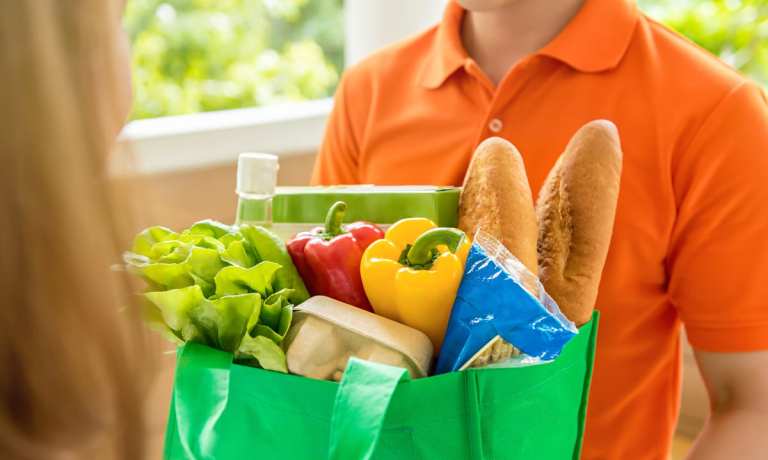
The events of the last year have enabled rapid growth for eCommerce platform Shopify, as stuck-at-home consumers turned to online shopping for purchases that would previously have been made in person. Though company executives predict that this growth will slow as consumers find their new normal amid the vaccine rollout, the platform’s latest addition moves into an industry that’s likely to remain an omnichannel experience for many shoppers in the years ahead: grocery.
Supplier GreenDropShip is launching an eCommerce app for Shopify that allows sellers to add natural and organic groceries to their online stores, reports Progressive Grocer. The platform — Shopify’s only grocery-selling app, according to GreenDropShip’s news release announcing the launch — makes it easy for merchants to import products from top brands into their stores. The app will grant these merchants access to more than 20,000 products from GreenDropShip’s inventory, which includes foods and beverages as well as non-edible goods in the aisles of local grocery stores: vitamins, skin care products and household necessities, among others.
“We created the GreenDropShip app to offer Shopify merchants a way to have seamless automation,” GreenDropShip Co-founder Allen Kaplun said in a statement. “It saves time and spares online resellers the expense and hassle of hiring a developer to build a solution, so Shopify merchants can save thousands in development costs.”
To use the GreenDropShip app for Shopify, sellers set up their account, enroll in a Dropship membership and download the app (there is a yearly fee for the former and a monthly fee to use the latter), add products to their stores and submit orders for all sales made to GreenDropShip, which automates the order fulfillment process.
As far as the focus on natural and organic foods, the company explains, “Organic food and beverages are often viewed as healthier, tastier and more ethical, which is why consumer demand for organically produced products continues to show double-digit growth. This is one trend that isn’t slowing down!”
Shopify’s move into food and beverages comes as apps that began as F&B-only digital marketplaces have started to expand into other areas. Around the world, online grocers and grocery solutions providers are seeing fundraises to the tune of tens or hundreds of millions of dollars. Top investors are noting the rare opportunity to capture consumers’ changing habits in this moment of global flux, as the pandemic continues to pose an immediate threat with millions of new infections each week even while the vaccine rollout has many consumers starting to suss out their “new normal.”
Particularly in North America, where both GreenDropShip and Shopify are based, experts in the field are quick to point out the under-penetration of eCommerce and delivery in the grocery industry. An analysis of the sector by Bain & Co. found that over the next five years, “online grocery penetration could as much as double in select markets.”
In fact, PYMNTS data has found that 63.9 percent of consumers make at least one of their routine grocery purchases online, and 78 percent of grocery shoppers who have shifted to shopping more online intend to maintain at least some of these changed behaviors. New additions to the online grocery space can challenge current leading platforms to step up their offerings for consumers and grocery store partners alike.
“A consumer with a newfound appreciation of her time, and whose work-from-home experience is likely to soon become a hybrid-work-from-home experience, is a consumer who is very happy to outsource both ordering and logistics to the platforms that make it easy and efficient to get grocery essentials,” noted Karen Webster in a recent feature. “…New tech could give grocery stores access to the microservices they need to power their own ecosystems using localized, automated fulfillment options, as well as access to ordering application programming interfaces (APIs) that meet the consumer’s high bar — potentially altering the competitive landscape once again and putting pressure on existing platforms to do more to keep the revenue side of their platform — the grocery stores — on board.”